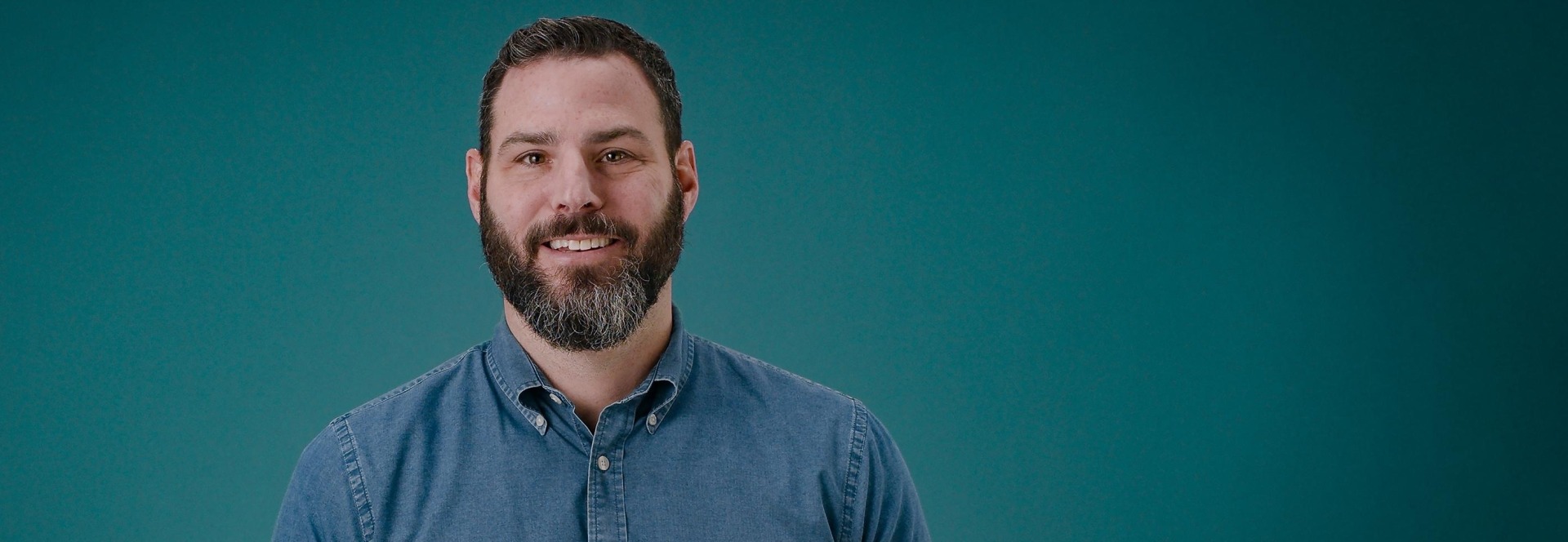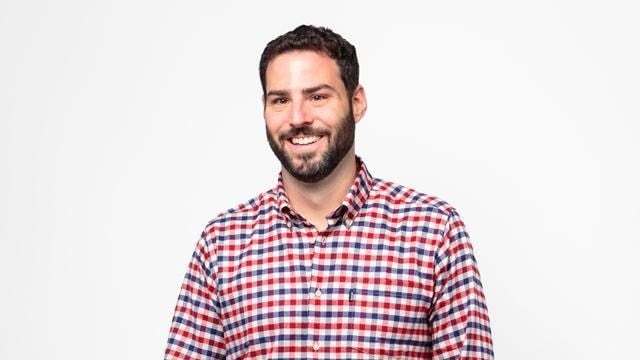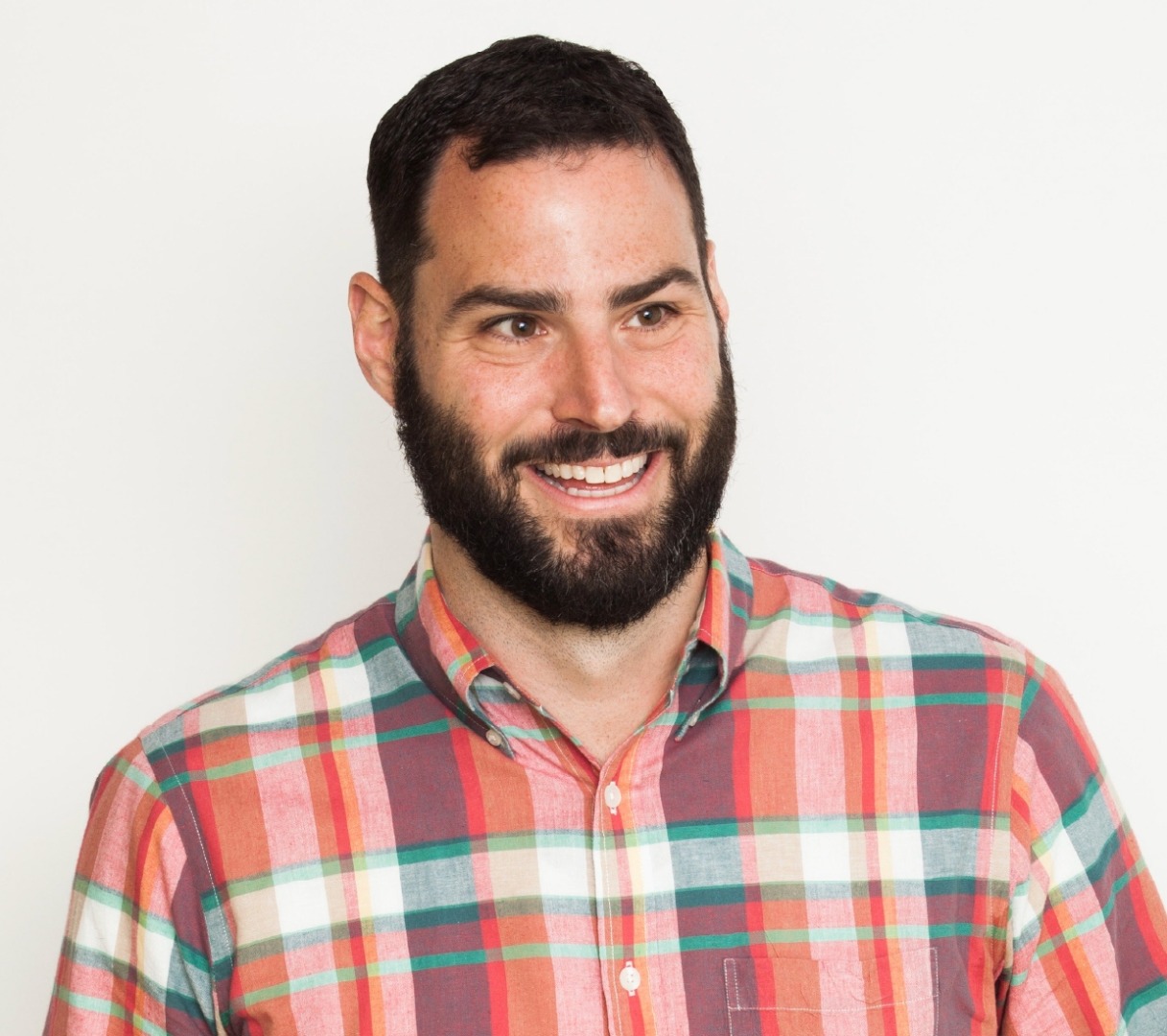Comments
- No comments found

David Schonthal's extensive background as an entrepreneur, innovator, and educator spans over two decades.
He is an award-winning Professor of Strategy, Innovation and Entrepreneurship at the Kellogg School of Management, where he teaches courses on new venture creation, design thinking, healthcare innovation and creativity.
Along with his colleague Loran Nordgren, David is one of the originators of Friction Theory – a groundbreaking methodology that explains why even the most promising innovations and change initiatives often struggle to gain traction with their intended audiences – and what to do about it. This work is popularised in David’s Wall Street Journal and National Bestselling book, The Human Element: Overcoming the Resistance That Awaits New Ideas (Wiley).
Outside of Kellogg, David has been a practitioner of entrepreneurship, design, and innovation for over 20 years. He has spent a decade working at world-renowned design firm IDEO. Currently, he serves as an Operating Partner at 7Wire Ventures, a healthcare technology-focused venture capital firm and a Venture Partner at Pritzker Group Venture Capital, a consumer and enterprise-focused fund. David is a Global Advisor at Design for Ventures (D4V), a Tokyo-based early-stage venture capital fund that invests in design-led Japanese startups.
He is also a contributing writer to Forbes, Inc., Fortune and Harvard Business Review magazines, authoring articles on corporate entrepreneurship, innovation, change and business design and is a Distinguished Achievement Award Finalist for Thinkers50, an international organisation that identifies, ranks, and shares the leading management ideas of our age.

For David, you can teach frameworks, tools and methods for bringing ideas to market faster, iterate on them, test them and be disciplined about it. However, he doesn’t think that entrepreneurship can be taught.
“I don’t think you can teach somebody to be resilient or to be problem-oriented instead of product-oriented. I think some people just inherently have this restlessness inside of them, or they’ve identified a problem they can’t stop thinking about. That’s something that I think has to strike you. But what we try to do is prepare you. So when that does strike you when that does happen in your life, that you have a set of tools and a set of mindsets and frameworks available to you, that you can take action on it and likely be more successful and fail faster.”
He adds that startup entrepreneurship is just one flavour of entrepreneurship. It is the one that gets more attention, but there are many other different ways of becoming an entrepreneur, many of which are lower-risk startups. For David, people can be entrepreneurial inside larger organisations and through acquisitions.
“People that want to buy a small business and grow it is their path to being an entrepreneur versus coming up with something from scratch. And that is an increasingly popular path.”
David argues that there are many ‘baby boomers’ who have built small businesses to which all their personal worth and liquidity are linked. For them, the only way to retire is to transact those businesses, which are typically too small for private equity to be interested. So, a young, entrepreneurially-minded professional could be the perfect person to buy and grow that business.
During his conversation with Dominic, David introduced us to the Friction Theory framework. When entrepreneurs come up with an idea, how do they present it to the world so that it’s more likely to gain traction? What we generally find, says David, is that great ideas will always face resistance, no matter how beneficial they are.
“What we’ve tried to do with our students is effectively build a toolbox of frameworks and theory that help them navigate the world they’re trying to build.”
So, what does that framework look like? David explains that they call it the friction map or friction report. Like Alex Osterwalder’s Business Model Canva, is something that you put on a wall. You note your hypotheses about what you think the value propositions ought to be and, who the customers ought to be and what the channels will be. And as you get out in the world, you update your thinking.
“The same is true of Friction Theory. We suggest you put these maps on the wall and hypothesise where you might encounter certain types of friction. And what we know about friction is that it’s easier to address when it’s forecasted versus when it presents itself and has to be remedied.”
“Oftentimes, what stands in the way of adopting a new idea is the very humans we’re trying to help. There are psychological forces and behavioural forces at play that work against our efforts as innovators.”
In his book, The Human Element, David and his co-author, Loran Nordgren, identify four types of friction against innovation.
The first friction is inertia, which is a human being’s overwhelming tendency to stick with what they know even though what is familiar to them is known to be inadequate.
Friction number two is the effort – perceived or real – required to make a change. This could be physical or cognitive effort.
“The more we are causing people to think, the more we’re causing people to navigate ambiguity, the more the friction of effort will present itself, preventing them from getting on board.”
The third is emotion, particularly the undesired negative feelings we cause in others. In fact, adds David, sometimes, to make their life easier, we cause others anxiety. We cause fear, and we cause other types of distress.
Finally, the fourth friction is what David refers to as reactants, which is human beings’ aversion to being told what to do by others.
“It doesn’t matter how good your idea is, if I feel like you’re pushing your idea on me, I’m going to push back, because human beings don’t necessarily like to be told what to do by other people.”
One of the things we know about reactants, says David, is that the more you can involve people in the process of change, the less it feels like you are imposing an idea upon them and more like you’re designing it together.
In his book, David tells the story of the most successful car salesperson in the world. In Detroit, Ali Reda singlehandedly sells more cars as an individual than most dealerships in the country. But, he doesn’t view his job as sales but as systematically removing the friction that stands in the way of something somebody already wants to do. They’ve come into the car dealership. They want a new car. They realise their current vehicle isn’t going to work for much longer. So they’ve already opted into the idea of considering something new.
So, Ali’s job is about removing the four frictions. And, adds David, this is also true in leadership and strategy change. You might say to your company that it’s time to be innovative or more customer-focused, but that carries a lot of ambiguity and inertia-related friction.
“Most people’s reaction to the idea of changing how they work is first and foremost going to be to be like, how is this a problem for me? They’re going to start evaluating where the likely negatives are before they lean into the positives. So the first reaction is going to be like, no thanks. I’m cool the way that I am.”
The second reaction will be: if I’m bought into the idea that we should be more customer-focused, how exactly do I do that? What day of the week do you want me to start focusing on customers? What should I stop doing to start doing that? And David argues that many company executives make the mistake of unveiling these lofty corporate ambitions about being more innovative or customer-focused.
“They don’t give people a roadmap to get from the present to the future that they’re trying to build. They don’t remove the ambiguity of how they’re going to do it. They also don’t realise that the very first time an organisation hears a new strategy, the reaction of their people is almost always going to be how is this going to be a problem for me?”
That’s why recognising human behaviour is likely to dictate how leaders might be more thoughtful about introducing strategies in a way that removes friction from their introduction versus what most people do is inadvertently exacerbate it by revealing strategies at All-hands and coming up with these big nebulous goals with no roadmap to get from present to future.

The authors of The Jolt reckon that 60% of sales companies don’t move forward, not because the buyer doesn’t believe that the service or product is good, but because of a fear of a change that they’re going to have to make. Then salespeople double down on that but don’t address the frictions personally.
Resistance, says David, shows up to a salesperson in a different way for everyone. People won’t admit they’re fearful or anxious because that means showing vulnerability.
“Human beings typically don’t want to put that forward. So what’s the excuse they’re going to give a salesperson? It’s too expensive, or my board won’t buy in. They’re going to try to shut the conversation down as quickly as possible. But it’s rarely about cost.”
When you pull back the layers, you understand the real fears holding them back. If you know that, that’s the risk. If you know that that’s the friction, that’s an emotional friction, you can work with that internal champion to diffuse that friction.
One of the things that David Schonthal recommends for salespeople is to take a step back when meeting resistance from the ‘internal Champion’. They should tell them to forget about the product or service and share a story of the last thing they did that worked and a few things that went in a different direction than expected. This allows the salesperson to minimise the risk and arm the internal champion with everything they need to recruit others in the organisation and get them on board.
And, how does this apply to B2B?
“We make this distinction that B2B and B2C are these radically different things, and we forget that B’s are really just a bunch of C’s clustered together. And you might sell to that one initial customer, but they have a bunch of other people that they need to convince, and there’s a bunch of other people whose frictions need to be addressed. It’s a more complicated sale, but understanding the human conditions that stand in the way of that progress is no different from B2B or B2C. You just have more of them to deal with, but still people.”
One of the mistakes we make as innovators is that we lump all resistance together. So, we’re getting resistance from a buyer, but what kind of resistance? Is it effort-related resistance, or is it inertia-related resistance? The solutions to those challenges are different depending on which one of them. Is it reactants, or is it emotion? People need to diagnose the specific types of friction they encounter. Because once you know which friction it is, the remedies that address those things become pretty self-evident.
Dominic Monkhouse is a proven architect of business growth with a demonstrable track record. As managing director, he scaled two UK technology companies from zero revenue to £30 million in five years. Since 2014, Dominic has worked as a CEO and executive team coach, helping ambitious CEOs and their leadership teams reach their full potential and achieve sustainable growth. He is the host of “The Melting Pot with Dominic Monkhouse” where he talks with some extraordinary thought leaders, fellow business authors, and CEOs to absorb their wisdom. Dominic is the author of F**K PLAN B: How to scale your technology business faster and achieve plan A, an exciting blueprint for cultural change and business transformation.
Leave your comments
Post comment as a guest